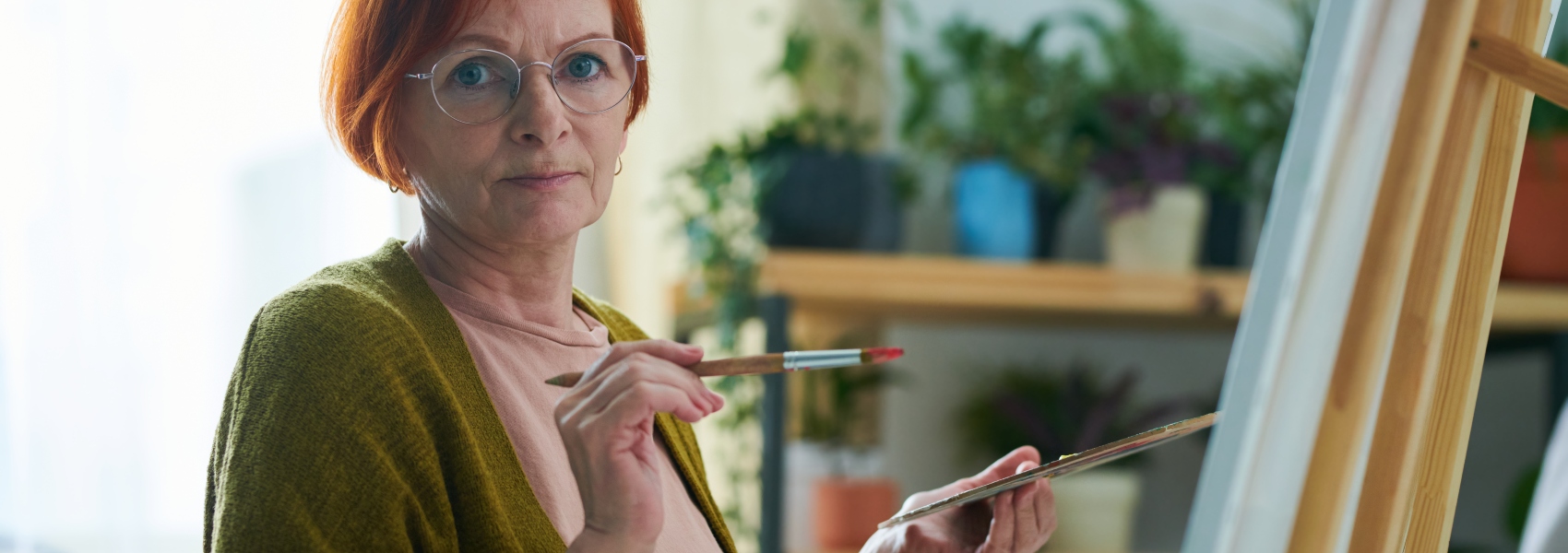What is Schizophrenia?
Schizophrenia is a lifelong mental health condition. (2) People with schizophrenia experience several symptoms, such as hallucinations and distorted or false perceptions, which are often not understood by their friends or family. These people suffer from severe side effects, such as drowsiness and lethargy. (1) “Positive” symptoms of schizophrenia are those that involve psychosis. They include delusions, hallucinations, and disorganized speech. “Negative” symptoms are blocked emotions or a muted emotional response.
What is Art Therapy?
Art therapy involves using art as a form of expression with the help of a therapist. When a person with mental illness uses art therapy, they can express their inner thoughts without using words. (1) Art therapy is when you engage in artistic activities that encourage you to express your innermost feelings in a creative way. It has been deemed “low-risk” and “high-benefit.” It may not work as the main form of therapy, but it can still be incorporated as a complementary strategy.
How can Art Therapy Help Schizophrenia?
“For people with schizophrenia, art therapy is a healthy form of distraction from various symptoms, such as disturbing thoughts, hearing voices, etc. The one to two-hour therapy sessions helps the person to focus on the activity assigned to them and ignore the voices in their head or stop talking to themselves, apart from providing a forum for creative expression”. (1)
Recent trends in psychiatry have been focusing on a more holistic approach to treatment. (2) Participants learn to make appropriate conversations with each other, relearn simple communication, understand the group dynamics, and learn to work with each other, thereby enhancing their team-building capabilities. Individual art therapy sessions involve the therapist and the person. The person is given the freedom to choose their visual medium of expression. This helps the therapist understand the person better. The person then creates the art form, after which the therapist and the person discuss and reflect upon the therapeutic relief through the art form.
Creating the art form could be something that they would like to share and express or something that they want to describe – an incident or an experience that they have not been comfortable sharing earlier. Art therapy is useful in addressing negative symptoms such as lack of motivation, social withdrawal, poor communication, and non-verbal skills. It can aid in two additional methods: Interpreting their emotions and feelings and expressing them without necessarily using words and fighting the side effects of medication. (1)
Art Therapy Sessions: What’s Involved?
Visual art therapy sessions can either take place in groups or in one-on-one interactions with the therapist. Group sessions not only help the person understand and express themselves but also helps them learn social skills. It can be a complementary therapy, which along with medication, will help in the treatment of the person and teach them to cope with the illness. Art therapy can be especially helpful for people with mental illness and their caregivers just to let go of their anger, frustration, and emotional upheavals in a healthy manner and in an environment that is supportive and stigma-free. (1)
“Art therapy can help keep people feel more focused in the present moment as they explore and play creatively.” “For example, create an image of an anchor or something that grounds you. This can be literal or metaphorical. ‘Most people appreciate having structure and something to focus on,’ says Pinsker.” (2) The goal of art therapy is to give voice to your thoughts and understand your feelings and emotions better. The goal here is more to spark a discussion between the therapist and the person about their state of mental health rather than creating good art. (1)
Research Regarding Art Therapy and Schizophrenia
The practice of using creativity or art therapy to improve symptoms started more than half a century ago. It’s been receiving renewed attention over the past 30 years. It’s difficult to know if art therapy works as a treatment for schizophrenia. Trial results have been inconsistent, mixed, and sometimes contradictory. Visual art therapy has been analyzed the most. It appears more successful than other creative forms. According to Dr. Akua Boateng, a licensed psychotherapist based in Philadelphia, Pennsylvania, “Art can be connected to emotional regulation, as well as brain and body integration. As a result, utilizing creativity can ground one in present reality and improve relationships and emotional expression.”
Examples of Art from People with Schizophrenia
- One famous example of a piece of artwork created by an artist with schizophrenia is Edvard Munch’s The Scream. (3)

- Another famous artist who was rumored to suffer from schizophrenia was Vincent Van Gogh. Van Gogh once wrote, “I put my heart and my soul into my work and lost my mind in the process.” (3)

- The remaining examples are from lesser-known artists or unknown artists:



Resources:




